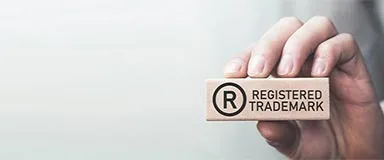Master the ins and outs of trademark monitoring, including why it’s so important and how to do it in a way that protects your mark.

Your cart is empty
*Online Support: Mon-Fri, 9am-5pm (GMT-4). For assistance anytime, send us a message
Determining the correct trademark class for your products or services can be complex. Our interactive chatbot simplifies this process by guiding you through the Nice Classification system, ensuring accurate categorization. Engage with our chatbot today to identify the appropriate trademark class for your offerings

Master the ins and outs of trademark monitoring, including why it’s so important and how to do it in a way that protects your mark.

Discover the risks and dangers of failing to register a trademark to understand the value and importance of trademark registration for your brand.

Discover how national and international trademark registration compare, the pros and cons of each, and which is right for you.
How can I identify the appropriate class or classes for my product(s)?
Choosing the right classification is crucial for a successful trademark registration. If your trademark is rejected, the Trademarks Office will not refund your application fees. It's important to have a trademark expert review your selection to assess its strength against competitors, as objections and oppositions are on the rise.
You can …
How can I conduct a search for the appropriate trademark class?
Trademark classifications are essential for the registration process but can sometimes be confusing. The 45 categories in the Nice Agreement provide a broad overview of different areas of commerce. Start by focusing on your main business and clearly describe the products or services you offer. Once you identify the most suitable …
Do I need to know the appropriate trademark class before filing a trademark application?
When you fill out a trademark registration application, you need to include the correct trademark class. This is because Trademark Offices worldwide use these classes to organize trademarks into groups of goods and services, making it easier to check for potential conflicts. This system helps differentiate the many trademarks globally and …
What is the Nice Classification (NCL) used for in international trademark registration?
In 1957, the World Intellectual Property Organization (WIPO) established the Nice Classification (NCL). This system organizes goods and services into a single classification framework. Since the agreement includes trademarks registered in multiple languages, it helps in searching for marks that might require translation. NCL divides business activities into 45 classes: 34 …
What is a multi-class trademark application?
The Nice Classification System organizes goods and services into different classes, and you can register your trademark in one or more of these classes.
Some countries permit only one class per application, while others allow multiple classes in a single application.
Filing separate applications for each class means that each class …
What are coordinated trademark classes?
Coordinated trademark classes overlap within the standard NCL categories because they are related. Many businesses expand their operations to increase market share. Your trademark application should cover your activities in these related industries to safeguard your brand. Select coordinated classes that not only enhance your registration application but also accommodate potential …
Still have questions?